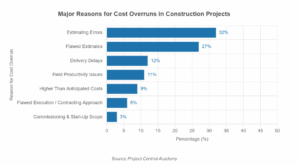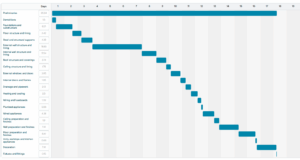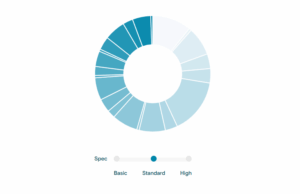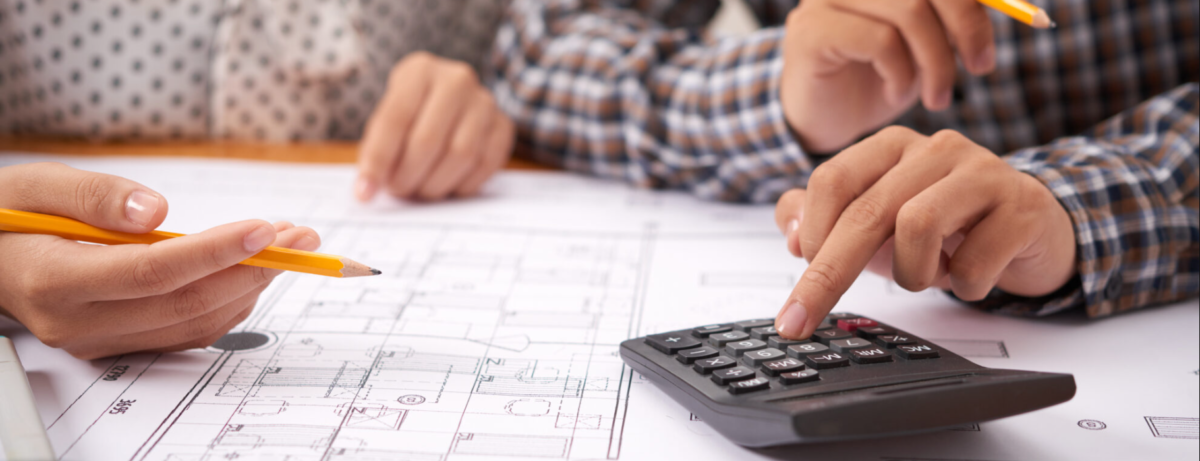The 7 Benefits Of Feasibility Studies In Construction Projects
July 28th, 2025
Before any plans are drawn up, the very first step in any successful construction project should be a feasibility study. A thorough study evaluates whether a proposed build is financially, operationally, technically, and legally possible.
A feasibility study assesses everything from cost estimation to planning risks, site conditions to legal constraints. With that, architects, project managers, and consultants can make informed decisions early in the process, saving time, money, and frustration down the line.
In this article, we’ll explore seven key benefits of feasibility studies in construction and why skipping this stage could be a costly mistake.
1. Providing Clearer Budget Estimates
A feasibility study sets a realistic baseline for costs. It forces early analysis of design, materials, planning fees, and site issues. Without one, budgets are based on assumptions, not facts.
An evidence-based estimate determines how much capital is needed (and at what stage), which is really important for clients to understand so they can secure access to funding in advance.
If the money runs out due to unexpected costs, the project stalls. A feasibility study turns budgeting from guesswork into strategy and helps keep the project financially on track from start to finish.
2. Avoiding Cost Overrun
Globally, 9 out of 10 construction projects exceed budget, with an average overrun of around 28%. In the UK, around 70% of major infrastructure schemes overrun projected costs. So whether it’s a small home extension or a large infrastructure scheme, no project is immune to budget overruns.
Estimating errors and flawed cost projections are responsible for nearly 60% of cost overruns in construction projects.

An early feasibility report pinpoints cost risks before they arise. With BuildPartner Construction Pricing Software, you get an accurate, itemised breakdown of every element in your project.
Simply enter your project details, and the system pulls thousands of live prices from an up-to-date database for all the materials required based on your floorplans.
It even includes small components and not just the obvious building materials (like bricks and mortar), but also preliminaries like skips, fixtures and fittings, and sundry items.
This level of transparency significantly reduces the risk of inaccurate estimates, something that’s all too common when manually entering costs line by line in a spreadsheet.
3. Testing A Project’s Financial Viability
A feasibility study is your first layer of financial due diligence. It helps you decide whether a project is worth pursuing and financially viable. By identifying all the associated costs early, it enables informed decisions before you commit to costly planning or construction.
For residential or personal projects, the focus is on usability and lifestyle benefits rather than financial gain, but the feasibility study still ensures that the project remains within budget.
When it comes to commercial developments, a properly conducted feasibility study determines whether the project is likely to deliver a worthwhile return on investment, which is especially important for developers, investors, and funding partners.
4. Planning Ahead For Challenges
A feasibility study identifies potential timeline risks, helping you anticipate delays and develop strategies to keep your project on schedule and within budget. For client satisfaction, it must be delivered on time and in full.
Here are some of the challenges a feasibility study can help identify and plan for:
- Regulatory delays, e.g., slow planning permission or conservation area restrictions.
- Site conditions, e.g., flood risk, unstable ground, or access issues for machinery.
- Supply issues, e.g., long lead times or reliance on imported materials.
- Labour shortages, e.g., lack of qualified bricklayers or electricians in the area.
- Budget risks, e.g., unexpected utility connection fees or underpriced preliminaries.
- Stakeholder objections, e.g., local residents opposing height, noise, or traffic impact.
So it’s not just about financial feasibility. A thorough study gives you a holistic view of the project’s operational viability, too, and keeps it running according to its critical path.

Start your free trial with BuildPartner to get a bespoke estimate of your construction project within minutes.
5. Improving Client Confidence
When clients see all the challenges and solutions laid out clearly from the start, they gain confidence that the project will be managed responsibly and delivered as promised.
When using BuildPartner, users can invite clients to the main dashboard to see a view of costs by:
- Stages – drainage, decoration, heating, roofing, etc.
- Areas – kitchen, bedroom, bathroom, etc.
Clients can also view a detailed breakdown of building materials, finishing materials, and labour costs across three scenarios—low, mid, and high benchmark contractors—along with the project timeline.

This transparency assures clients that every stage and aspect of the project has been fully costed, minimising the risk of unexpected expenses later.
If any costs do arise, they’ll clearly understand what was included and agreed upon from the start. That protects both sides: clients trust the process, and contractors aren’t blamed for unexpected surprises.
6. Prioritising Project Elements
A feasibility study allows you to make flexible decisions about building materials and components from the start. This way, you can adjust the scope or budget early on, preventing costs from spiralling out of control.
For example, with BuildPartner, at the click of a button, you can change a project’s specification:
- Basic spec is a basic finish; e.g., Leyland, Everest, Wickes.
- Standard spec is a standard finish; e.g., Dulux, Hamilton, Slim Line.
- Premium spec is a high-spec finish; e.g., Farrow & Ball, Fine Line, Siemens.

And in the Schedule, you can choose from a range of options for any individual building material:

You can adjust the specification based on what matters to each individual client. For example, one client may choose to reduce spending on kitchen fittings to free up budget for higher-end flooring. Another might scale back on fitted wardrobes in order to invest in underfloor heating.
This flexibility helps keep the overall budget in check and allows clients to make trade-offs without compromising on the features that matter most to them.
7. Helping Obtain Planning Permission
A feasibility study can flag local planning constraints early. These might include height limits, boundary rules, or conservation area restrictions. You can then shape the design to meet planning policy, meaning you’re more likely to get approval the first time.
For example, there’s no point commissioning architectural drawings for a three-storey townhouse if the feasibility study reveals it would block sunlight to neighbouring properties and contravene local planning rules. In that case, the study might point you toward a two-storey design that meets daylight requirements.
The feasibility study ensures time and money aren’t wasted on designs that won’t get built.
Start your free trial with BuildPartner to get a bespoke estimate of your construction project within minutes.
Feasibility Studies Save Time, Money, and Stress
By clarifying what’s possible, what it will cost, and what risks need managing, a feasibility study helps you make informed decisions before money is spent on drawings and applications.
Whether residential or commercial, starting with a feasibility study puts you in control. It allows you to adjust specifications and building materials to focus on what matters most in order to stay within budget.
Frequently Asked Questions About Feasibility Studies
Here are some answers to frequently asked questions about feasibility studies in construction projects.
How do feasibility studies influence project timelines?
Feasibility studies give you foresight. For example, if you’re relying on a special component like hemp bricks (or any bespoke materials), a thorough study will establish if enough material is available and can be delivered on time. After all, without those bricks, the build can’t proceed and the whole project would come to a halt.
What does a feasibility study include?
Typically, it covers cost estimates, timeline analysis, site constraints, regulatory requirements, and risk assessments. Some feasibility studies concentrate primarily on financial aspects, such as cost estimates, budget alignment, and return on investment.
Can feasibility studies help with securing financing?
A thorough feasibility study provides lenders and investors with reliable data on costs, risks, and expected returns. Mortgage lenders usually ask for a detailed cost plan to assess the viability and risk of self-build projects, especially when the client is funding it personally.
When should a feasibility study be done?
A feasibility study should be completed early, ideally before architectural designs are drawn up or planning applications submitted. It helps iron out the project’s particulars and scope to ensure designs align with budget and planning requirements


